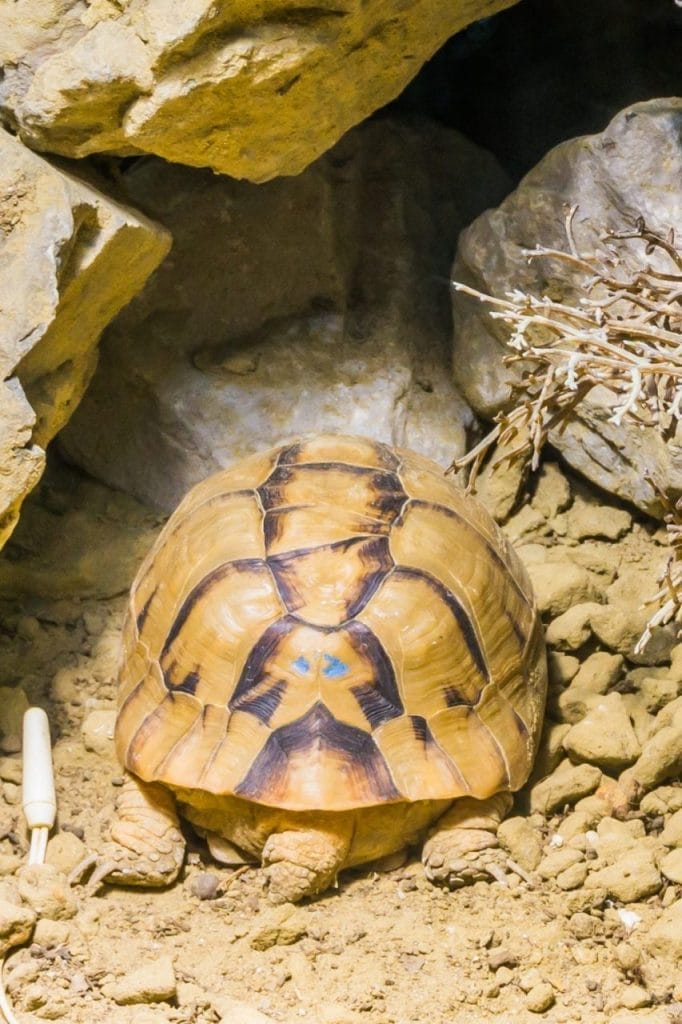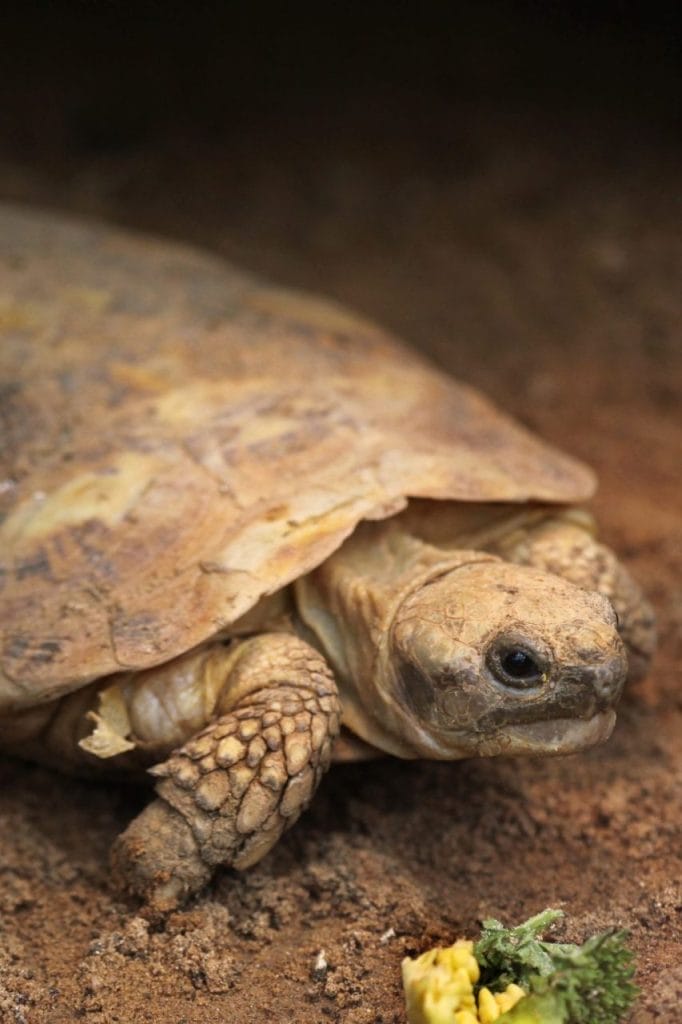The 5 Smallest Tortoises You Can Keep as Pets (and Why They’re Perfect!)

This post was created with help from AI tools and carefully reviewed by a human (Muntaseer Rahman). For more on how we use AI on this site, check out our Editorial Policy.
Some tortoises grow big enough to need their own shed. These ones? You can hold them in one hand — but that doesn’t mean they’re “low effort.”
Here are five of the smallest tortoise species you’ll see in the pet world, how big they actually get, and what you should know before bringing one home.

Why Small Tortoises Appeal to People
- Space savings – They need less floor space than a sulcata or leopard tortoise, but still a lot more than most people expect.
- Manageable weight – You can actually lift and move them without feeling like you just deadlifted a cinder block.
- Personality in a small package – Even the tiniest species have quirks and habits that make them fun to watch.
- Less mess – Smaller appetites, smaller poops. Your mop will thank you.
Still, every tortoise on this list lives decades and needs proper heat, UVB, and diet. “Small” doesn’t mean “easy.”
What “Small” Doesn’t Mean:
Small tortoises appeal to people for good reasons. But here’s what “small” does NOT reduce:
| What’s Smaller | What’s NOT Smaller |
|---|---|
| ✅ Enclosure footprint | ❌ Equipment requirements |
| ✅ Food consumption | ❌ UVB lighting needs |
| ✅ Cleanup effort | ❌ Heating requirements |
| ✅ Weight to lift | ❌ Lifespan commitment |
| ❌ Equipment cost |
The equipment truth:
A 6-inch Russian tortoise needs the SAME QUALITY equipment as a 100-pound Sulcata:
- Quality UVB lighting (same bulb types)
- Proper heating with thermostat control
- Temperature monitoring
- Appropriate substrate depth
The enclosure can be smaller. The equipment cannot be cheaper or lower quality.
Equipment investment for ANY tortoise species: $200-400 regardless of size
Complete equipment guide: Tortoise Owner Essentials
Warning: You Might Spend Hours Here
I’ve built the ultimate turtle and tortoise species database. This isn’t your average turtle list. Filter by genus, conservation status, and more. How many species? Which are endangered? What’s the tiniest one? It’s all there.
5 Small Tortoises That Stay Small!
| Tortoise | Average Size | Personality | Best For |
|---|---|---|---|
| Speckled Padloper | 3–4 inches | Shy, secretive | Not available as pets; found only in South Africa under strict protection |
| Egyptian | 4–5 inches | Shy but curious | Experienced keepers with legal, captive-bred sources |
| Pancake | 6–7 inches (flat) | Social, agile | Keepers who like active, unique species |
| Russian | 5–9 inches | Active, hardy | Anyone with space and secure enclosures |
| Hermann’s | Under 8 inches | Friendly, interactive | Beginners who can give large floor space |
| Greek | 5–8 inches | Friendly, adaptable | Indoor or outdoor setups with warm climates |
Note on the Speckled Padloper: This species is the world’s smallest tortoise, but it’s fully protected in South Africa and cannot be legally traded or kept as a pet in most countries. It’s here for fun fact value only — if you see one for sale, it’s almost certainly illegal or wild-caught.

1. Egyptian Tortoise (Testudo kleinmanni)
- Size: Around 4–5 inches (10–13 cm) adult shell length.
- Status: Critically Endangered, CITES Appendix I — legal only if captive-bred and with paperwork.
- Space: At least 4×8 ft for a pair indoors; larger if possible.
- Personality: Shy but curious, best with calm keepers.
This is one of the rarest tortoises in the pet trade. They love warm, dry setups and don’t brumate.
Because they’re so threatened in the wild, make sure you’re buying from a reputable breeder who can prove captive origin.

2. Pancake Tortoise (Malacochersus tornieri)
- Size: 6–7 inches (15–18 cm).
- Status: Vulnerable, wild collection banned in many areas.
- Space: Big horizontal floor space with rocks and hides — 4×8 ft or more.
- Personality: Fast, agile, and more social than most tortoises.
Their flat shells let them squeeze into rock crevices in the wild, so they’ll use every hide you give them.
Great for people who want a tortoise that’s active and fun to watch, but still small enough to manage.

3. Russian Tortoise (Agrionemys horsfieldii)
- Size: 5–9 inches (13–23 cm), males smaller.
- Status: Common in captivity but many imports are wild-caught — avoid those.
- Space: 8×4 ft minimum indoors; more for outdoor pens.
- Personality: Hardy, busy, and a bit of an escape artist.
These are tough little tanks that can handle a wide range of climates.
They’re plant-eaters only — no protein — and love to dig, so secure fencing is a must.
I asked a tortoise expert named Patty Mesich for her opinion on the best tortoise species for beginners. Here’s what she replied:
” I have always been a fan of the Russian tortoise or Hermann tortoise. They stay relatively small and are very friendly. Don’t get me wrong, every tortoise is very friendly and you can develop a nice bond with them given time and patience. Picking the right species for you is based on how much time and space you can give them. For example, so many people get Sulcata tortoises not knowing how large they get. They can get over 100 pounds and live many decades. In my opinion sulcatas are extremely overbred and too many wind up being given away since they get so large. It also seems like they are most prone to MBD since most keepers cannot meet their space requirements. Please do your research! “

4. Hermann’s Tortoise (Testudo hermanni)
- Size: Usually under 8 inches (20 cm).
- Status: Widely bred in captivity.
- Space: At least 8×4 ft for adults.
- Personality: Friendly and interactive, often comes to investigate you.
Hermann’s are beginner-friendly as long as you can give them enough room and the right environment. They do well in warm outdoor enclosures during summer and can live 50+ years.

5. Greek Tortoise (Testudo graeca, various subspecies)
- Size: Typically 5–8 inches (13–20 cm) depending on subspecies.
- Status: Still common in captivity, but some subspecies are threatened.
- Space: 8×4 ft or more.
- Personality: Calm, adaptable, and good with gentle handling.
These have beautiful patterned shells and are adaptable to many setups if given proper heating, UVB, and humidity.
Like Hermann’s, some will brumate if kept outdoors in the right climate.
This Hilarious Turtle Book Might Know Your Pet Better Than You Do
Let’s be real—most turtle care guides feel like reading a textbook written by a sleep-deprived zookeeper.
This one’s not that.
Told from the snarky point of view of a grumpy, judgmental turtle, 21 Turtle Truths You’ll Never Read in a Care Guide is packed with sarcasm, sass, and surprisingly useful insights.
And hey—you don’t have to commit to the whole thing just yet.
Grab 2 free truths from the ebook and get a taste of what your turtle really thinks about your setup, your food choices, and that weird plastic palm tree.
It’s funny, it’s honest, and if you’ve ever owned a turtle who glares at you like you’re the problem—you’ll feel seen.
Before You Choose One
- Small still means big – Even the tiniest species need large enclosures, especially outdoors. Think “garden bed,” not “fish tank.”
- Heat and UVB are non-negotiable – Without them, your tortoise will get sick.
- Decades-long commitment – Most live 40–60+ years. They could outlive you.
- Captive-bred only – Wild-caught tortoises suffer high mortality and spread parasites. Buy from a trusted breeder or adopt from a rescue.
- Know their brumation needs – Some species sleep through winter, some don’t. Get this wrong and you can kill them.
If you want a tortoise that’s compact, charming, and full of life, these species are as small as it gets in the legal pet world — but only the right keeper can give them the space and care they need.

About Author
Muntaseer Rahman started keeping pet turtles back in 2013. He also owns the largest Turtle & Tortoise Facebook community in Bangladesh. These days he is mostly active on Facebook.











